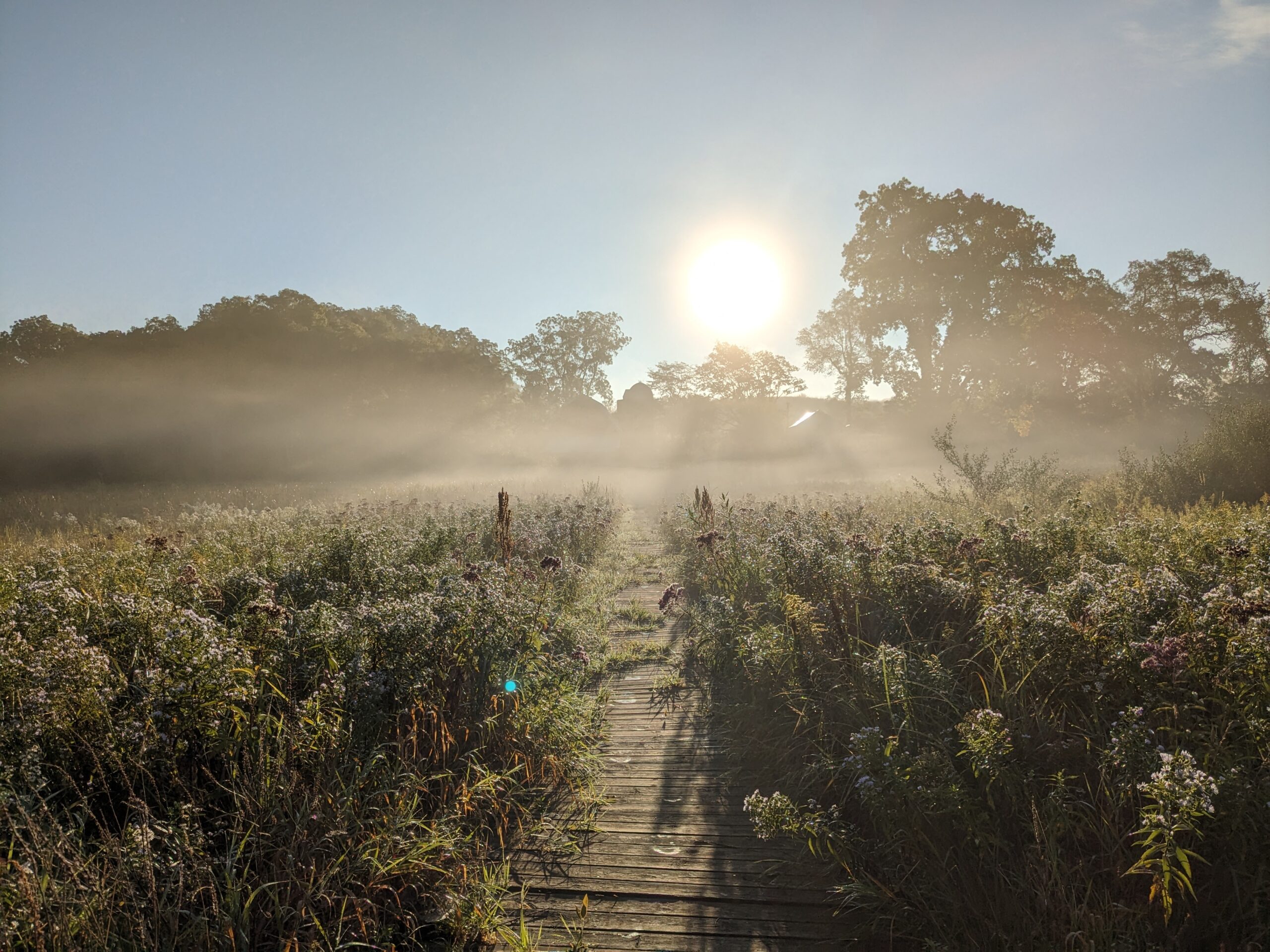Conservation Manager Chad Machinski, M.S., joined the Michigan Audubon team in March and has made great progress in reviving the stewardship of MA’s sanctuaries and engaging with our dedicated volunteers ever since. To help you stay connected with the work being done, he will be presenting regular online updates about activities going on at them: birds seen or heard, conservation work, improvements, interesting plants, and more.
OTIS FARM BIRD SANCTUARY
While blinding, the sun turned the towering trees into silhouettes and lit up the smooth swamp aster that lines the boardwalk at Otis Farm Bird Sanctuary. The morning fog gave it a beautiful but eerie feel. Today was going to be a great day to be working outside.
Volunteer Del Bachert and I began cutting back some of the vegetation that can make the boardwalk challenging to maneuver. Soon, another volunteer, Derrick Kooistra, arrived, ready to make some repairs to the boardwalk. After some brief setbacks, Derrick got several of the worst boards replaced. We continued with some minor cleanup around the house and structures at Otis until the afternoon; see, it was quite dewy out in the prairie, and if you walked off trail, which is a requirement for doing any work, you were sure to end up soaked to the bone after just a few minutes. So, waiting until the afternoon allowed the sun to dry some of that dew off.
Once a little drier, Del, Derrick, and I began working on the southern section of the prairie, working to remove both native and non-native small woody trees and shrubs. While some woody material isn’t the worst thing in the prairie, you don’t need a 100 ft tree in it as it can alter the vegetative structure of the prairie and change the bird composition. So even the small, native trees faced the saw. When I parted ways with Derrick and Del, I tackled one solitary clump of autumn olive growing in the unit we plan on burning this fall. Because this was a fairly dense clump, I felt compelled to remove it now, believing that a clump that dense would not carry fire through it very well.
The following day, I was back at Otis, but with a different task at hand — interpretive sign installation. Joined by Del and Gayle Bachert, along with my colleagues Lindsay Cain and Molly Keenan, we worked to install several interpretative signs as part of a sanctuary improvement project that Lindsay coordinated. Working with colleagues to install these signs all along the trail was a fun day. Please come check them out!
I also must mention help by Doug Klein. Doug is often at Otis, making minor repairs and the like that might go unnoticed by visitors. Thanks, Doug!
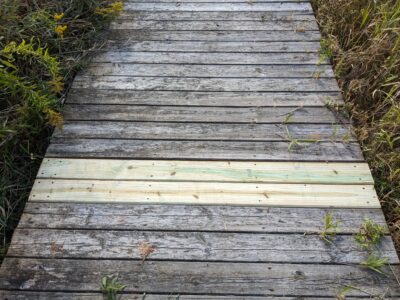
Boardwalk board replacement done by Derrick Kooistra. Photo by Chad Machinski
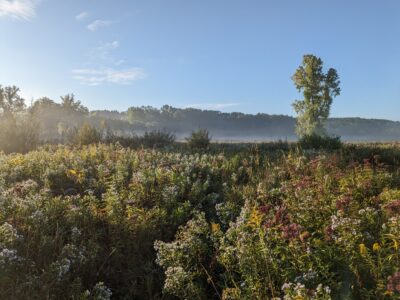
On boardwalk looking south over Fen. Photo by Chad Machinski
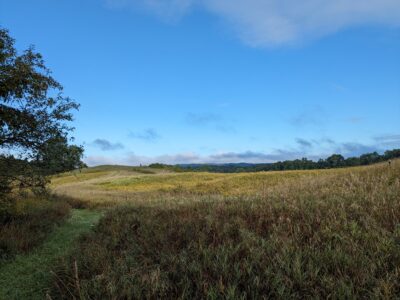
Looking west from trail exiting dry-mesic forest on the east. Photo by Chad Machinski
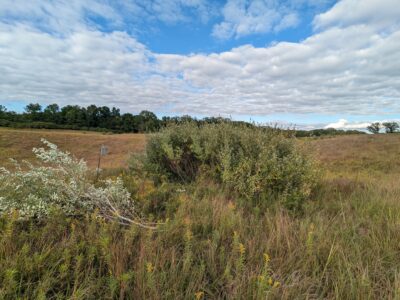
Autumn Olive clump in western section of Unit 2.06 before removal. Clearing this area because it will get burned in November. Photo by Chad Machinski
PHYLLIS HAEHNLE MEMORIAL SANCTUARY
The last week of September saw work at our Phyllis Haehnle Memorial Sanctuary in Grass Lake. I love working with the folks on the Haehnle Committee. Having volunteers so dedicated to a site is truly a special thing. Over cider and donuts, we developed a plan for working with the U.S. Fish and Wildlife Service to help restore and create wetland, grassland, and savanna habitats at Haehnle. In addition, we were recently awarded a Wildlife Habitat Grant for savanna restoration work there. There are great things in the future for Haehnle!
CAPITAL CITY BIRD SANCTUARY
Just a few days later, I was out at Capital City Bird Sanctuary working with the MSU Pre-Vet Club. This group of students braved thorns, vines, wet feet, and sticking seeds to remove the autumn olive that is always creeping in on the edge of the created wet-mesic prairie. It was great to have this group of students out, and I am happy to host them again in November!
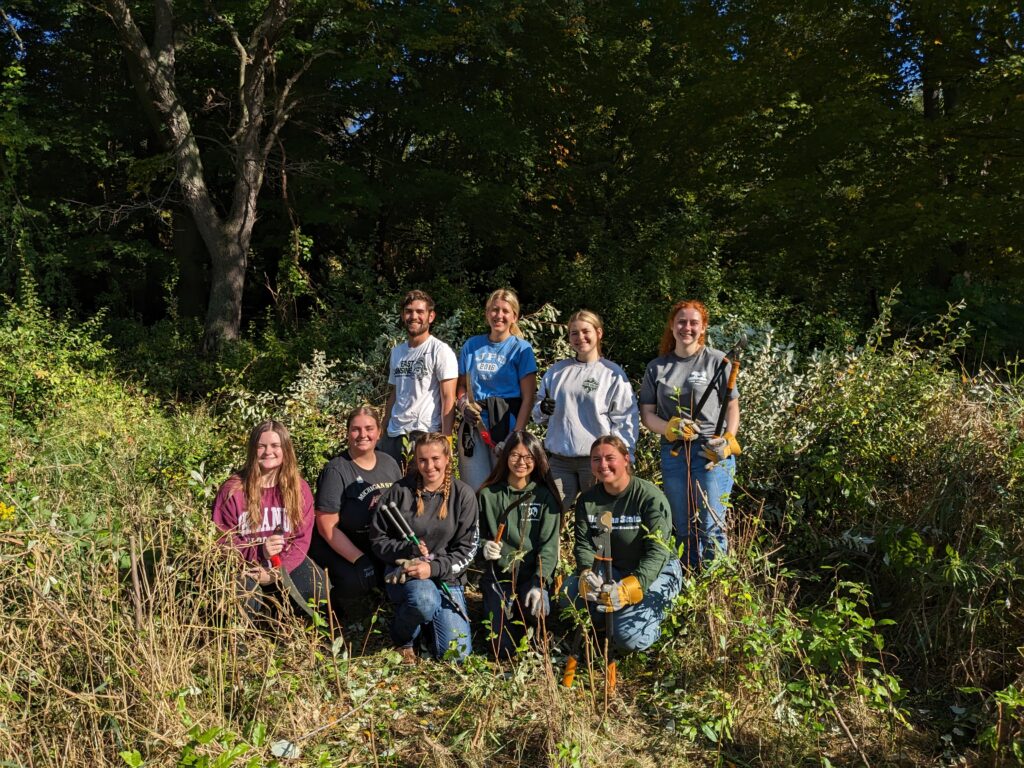
Volunteer Workday with MSU Pre-Vet students. Worked to cut down Autumn Olive in prairie. Photo by Chad Machinski
MARTHA MOTT SANCTUARY
I will leave this blog the same way I left the last blog: at Martha Mott Sanctuary. We held our second volunteer workday at Martha Mott on October 17. Three other volunteers and I tackled the sassafras creeping into the sanctuary’s open areas. While cutting down native trees can feel a bit sacrilegious at times, sassafras is a mighty force when it invades open areas, often forming thickets due to its clonal nature. To reclaim areas that were once more open, we had no choice but to cut back the many 1–4″ diameter trees. Hidden amongst them and the various red cedars were two old bluebird boxes that will be removed and placed into more open areas. Considering we were using just hand tools, what the four of us could accomplish was great. Follow-up work will undoubtedly be needed, but it is an encouraging start.
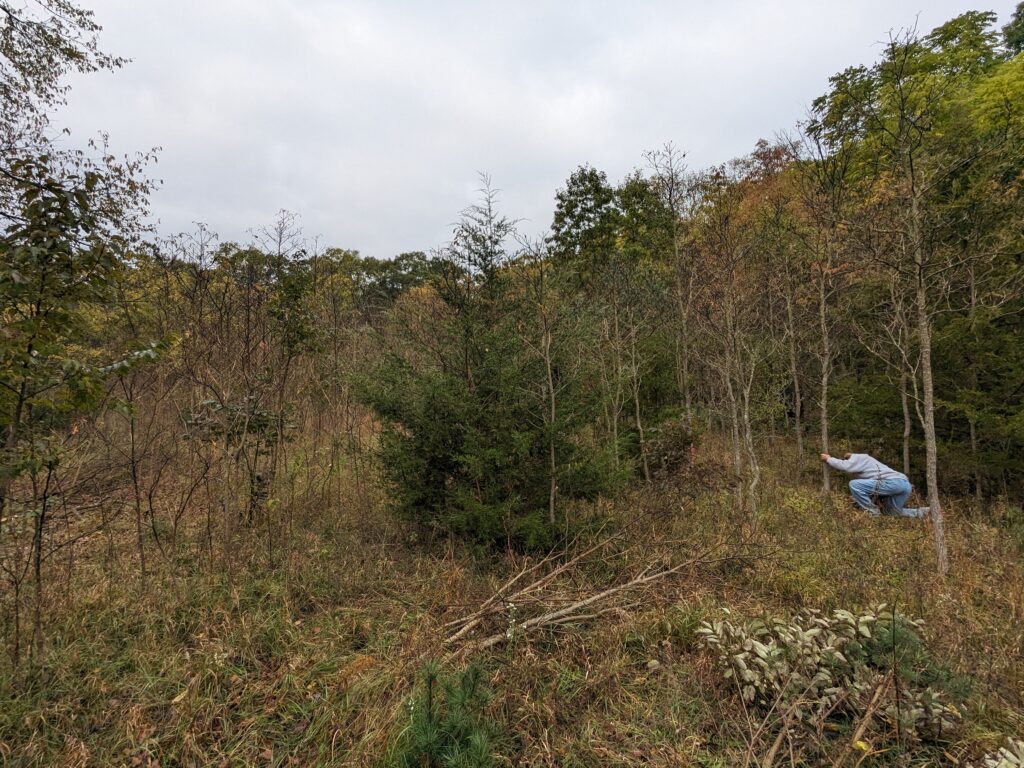
Volunteer workday cutting down sassafras, autumn olive, red cedar, and persimmon that is encroaching into prairie. Volunteer Mike Rosner is kneeling. Photo by Chad Machinski
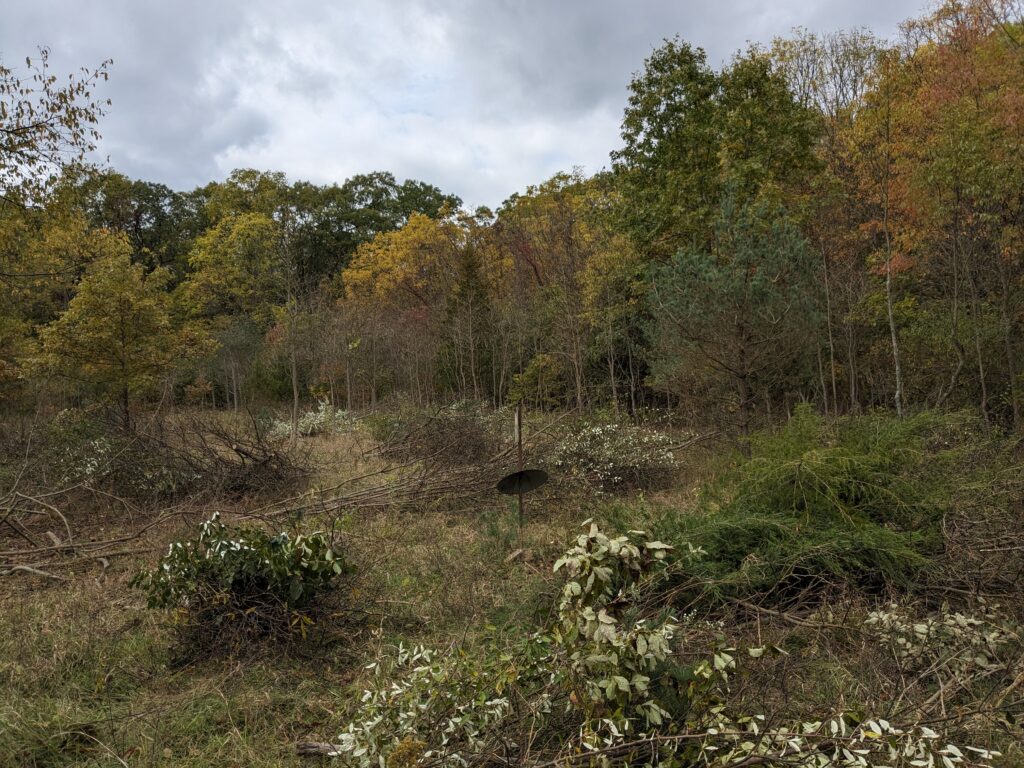
Results of the workday. Note the liberated bluebird box pole. Photo by Chad Machinski
To learn more about Michigan Audubon sanctuaries, visit michiganaudubon.org/our-conservation-impact/bird-sanctuaries. If you want to volunteer at a Michigan Audubon sanctuary, please complete the Sanctuary Volunteer Interest Form.
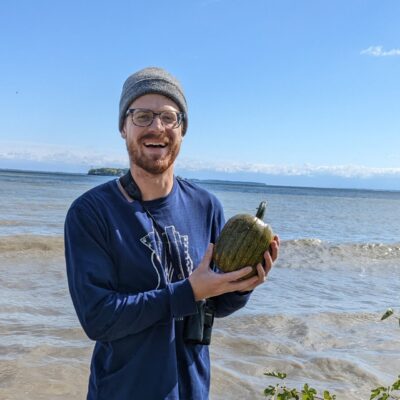
Chad Machinski, MS
Conservation Manager
While Chad’s first love is botany, he doesn’t deny the intertwining nature of birds, plants, insects, and all other organisms we share the world with. His passion for the natural world began in his undergraduate time at the University of Michigan, taking several different forms along the way. His graduate studies at the University of Michigan allowed him to more closely examine the natural communities of Michigan and further understand the complex nature of ecosystems. His work as a Nichols Arboretum Caretaker while in school further enabled him to be directly involved in conservation work as he led workdays removing invasive plant species, performed trail maintenance, and guided tours. Chad can usually be found out in a park in a few ways: binoculars glued to his face, hunched over looking at plants, or flipping logs looking for snakes and salamanders.

